Do people with bad hearts need rest or exercise?
Every heart attack patient will ask the doctor when he is discharged from the hospital: what should I pay attention to in the future? Are there any dietary restrictions? Can I still exercise?
So is it better for people with heart disease to rest or exercise?
Let's clarify one thing, a bad heart doesn't mean it's heart disease because the concept of a bad heart is too big a generalization and too big for us to discuss, so we're just going to talk for now about whether it's better for people with heart disease to rest or exercise.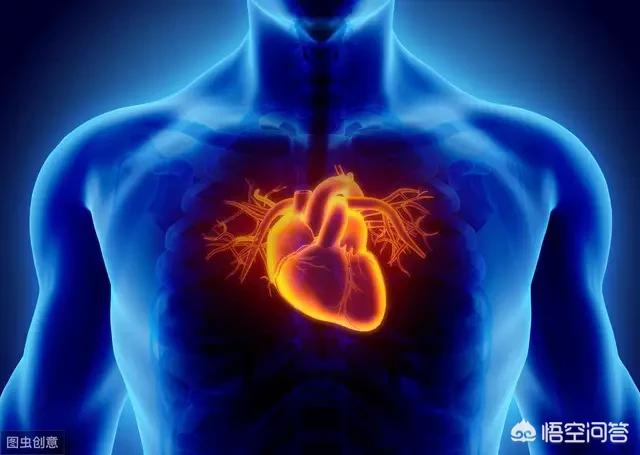
Let's start with the downside of not exercising: a study was recently published in the Journal of the American College of Cardiology. The study included 149,000 people, nearly 10 years of follow-up concluded: sedentary people than the risk of death from cardiovascular disease in people who exercise increased by 107%, which shows the benefits of exercise. Of course already heart disease, we need to look the other way.
In fact, heart disease is also a very large class of diseases, we are also very difficult to be specific to each heart disease in the end can not exercise, not to mention that exercise is also a broad concept, long-distance running is also exercise, fast walking is also exercise. Therefore, we try to say some principle things, specific to each person each kind of heart disease also need to look at specific.
Heart disease is simply categorized into congenital heart disease and acquired heart disease. Congenital heart disease is a heart disease that is brought out from the womb of the mother and manifests itself in infancy and early childhood when the structure of the heart or even affects the function of the heart. Congenital heart disease simply means that the heart is not fully developed, the place where it should be closed is not closed, if it can be detected early, early treatment, whether it is internal medicine intervention, or surgical treatment, as long as it can be treated early, then it will not affect the quality of life in the future, what to do what to do, but also can exercise, and exercise itself is beneficial, can be strong and healthy, and prevent other diseases.
However, if the congenital heart disease is detected late and has already caused problems with heart function, then it is important to be cautious about whether it is sedentary or exercise that causes problems with heart function, and we will talk specifically about this later.
There are many diseases of acquired heart disease, including coronary heart disease with narrowing of blood vessels, arrhythmia with problems in circuits, and cardiomyopathy and valvular disease with problems in the structure of the heart. Whether or not these heart diseases are able to exercise mainly depends on the cardiac function on the one hand, and on the other hand, it depends on whether or not they have been cured, and on the other hand, it depends on whether or not the condition is stabilized.
1, has been cured of heart disease, such as supraventricular tachycardia this arrhythmia, through radiofrequency ablation surgery is able to cure, after the cure, no longer have this heart disease, and the same as a normal person, then certainly can exercise, encourage exercise. Of course, there are not many heart diseases that can be completely cured, but there are also some arrhythmias that can be cured, such as frequent premature beats and severe bradycardia treated with a pacemaker.
2, the condition of stable heart disease, such as coronary heart disease and no angina attack, but also under the control of regular medication, then it is also recommended exercise exercise, exercise is conducive to the control of blood pressure, blood glucose, blood lipids, weight control, and is conducive to the control of atherosclerosis aggravation.
3, the condition of unstable heart disease, such as frequent attacks of arrhythmia, angina pectoris recurring, the heart is obviously enlarged, heart function is obviously impaired, etc., is certainly not exercise.
The principle is always that cured heart disease can definitely exercise, stable heart disease can also exercise according to the situation, and unstable heart disease is definitely not recommended to exercise. Myocardial ischemia is well understood, that is, when you exercise, it will worsen, and you will commit angina, this kind of myocardial ischemia is unstable, and definitely needs active treatment before deciding whether you can exercise or not.
Let's focus on cardiac function without exercise. First of all, severe heart failure, unstable heart failure, susceptibility to arrhythmia, and cardiac arrest are all contraindicated.
The European Society of Cardiology's recommendations for relative and absolute contraindications to exercise in patients with heart failure are for informational purposes only.
1. Relative taboos:
Weight gain of more than 1.8kg in 1-3 days;
In continuous or intermittent dopamine therapy, this is crap, who dares to exercise with dopamine, it's resuscitation;
Systolic blood pressure falls during exercise;
Cardiac function level 4, this I personally do not agree, cardiac function level 4, do not exercise will be guilty of heart failure, but also exercise a hair line?
Severe arrhythmia during activity at quiet;
Heart rate of 100 beats or more at quiet in the prone position.
2. Absolute taboos:
Progressive worsening of dyspnea at rest or with activity in the last 3-5 days;
Significant symptoms of myocardial ischemia with low-intensity activity, poorly controlled diabetes;
Active pericarditis, myocarditis;
Have a significant infectious or systemic disease;
Thrombophlebitis;
Recent embolic conditions such as myocardial infarction, cerebral infarction, pulmonary embolism, etc.
Having moderate to severe aortic stenosis, regurgitant valvular disease requiring surgical intervention, having had a heart attack within 3 weeks, and new onset of atrial fibrillation are all conditions that make exercise inappropriate.
In short, a bad heart is a big concept, and you can't give a blanket answer as to whether you can exercise or not, but whether you can exercise or not depends on how bad your heart really is. At the same time, we also need to understand, which exercise is good for the heart?
An 80,000-person study done in the UK in 2016, looking at 10 years, focused on exploring the relationship between different types of physical activity and all-cause mortality, and the findings showed that:
In first place, swing sports, which encompass team sports such as tennis and badminton, had the strongest level of reduction in all-cause mortality, with a 47 percent reduction.
Second place goes to swimming, which reduces mortality by 41%.
Third place goes to aerobic exercise, more commonly known as aerobic gymnastics, which reduces mortality by 36 percent.
Running's contribution to reducing all-cause mortality was only 13% lower compared to people who did not exercise at all. Cycling, however, fared a little lower in this regard, with only a 10% reduction. (Running and cycling are also aerobic exercises)
The above studies are for all-cause mortality reduction, that is, for deaths from all causes, with all of the above exercises; for reducing the risk of cardiovascular disease deaths the top three are still these three exercises.
In healthy people, exercise makes more sense and prevents disease, and people with heart disease need to exercise as much as they can, depending on their condition.
[Protected by rights warriors, plagiarism must be investigated!
Hello, I'm Dr. Knowles Blue.
There are really too many different types of heart disease, and the degree of restriction on exercise is really different for each type of heart disease, there are big differences, even for the same type of heart disease, there are differences in different people, so it is not possible to say that you can make a generalization. There are probably the following.
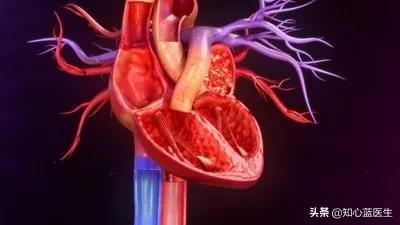
1. Cured heart disease
The word "cured" may be easier to understand, which in layman's terms means that it is cured, leaving no loose ends. For example, some common types of congenital heart disease, atrial septal defect, ventricular septal defect, arterial catheterization, pulmonary valve stenosis, etc., if early surgery, the heart has not yet appeared secondary changes, or can recover, after the doctor's assessment, it is entirely possible to be as normal as other people can do the exercise you can do. Adult acquired heart disease, such as some premature beats, supraventricular tachycardia, etc., if after active treatment, in fact, after these diseases are cured, they do not affect the heart function, and exercise does not need to worry too much. These cured heart disease, in common parlance, is a one-shot deal, well is well, in the future, even if the heart recurrence of disease is also other reasons, and this heart disease has nothing to do with.
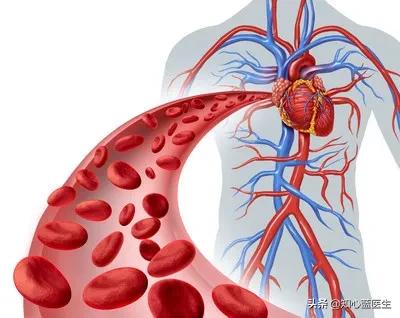
2. Chronic, incurable heart disease, stabilization period
Many types of heart disease are long-lasting and cannot be cured. Even if they are treated with medication and surgery, they only control the symptoms and keep the disease from progressing, or if the heart has been damaged beyond recovery. To be honest, most of the acquired heart disease, can not be cured, such as the most common coronary heart disease, it can not be cured, taking drugs, surgery, stents, etc. is only to lift the serious lesions and slow down the progress of the disease; and then the heart valve disease, some people have mitral stenosis, regurgitation, some people have aortic stenosis, regurgitation, etc., even if you have replaced the prosthetic valves through the surgery, the heart is also has been a certain degree of damage to the original installation of the Can it be the same as the replacement part? For these people, it is more difficult to grasp, although there are various guidelines on exercise, some of them are not very practical. These patients often have cardiac insufficiency, or varying degrees of heart failure, and will feel uncomfortable after a certain level of activity. Therefore, the recommendation for exercise is to "act according to one's strength", and this "strength" is known only to oneself, that is to say, the intensity of exercise is appropriate for the absence of uncomfortable symptoms, and there are 8 points of strength, but I only use 5 points. If you are uncomfortable running, then walk fast; if you are uncomfortable walking fast, then walk slowly; if you are uncomfortable walking slowly, then sit; if you are uncomfortable sitting, then lie down; if you are uncomfortable lying down, then you won't want to move.

3. Chronic, incurable heart disease, unstable conditions
This is also easy to understand, and then take the front of the coronary heart disease, heart valve, usually run all right, these days become fast walking uncomfortable, then can not be forced to run it, have to go to the hospital to see what the problem is, barely run, fast walking down, most of them are to be side of the serious.

4. In addition to symptoms, there are some hidden risks
Heart disease patients in the activity of the symptoms, obviously, is to remind us to continue this can not, to stop, in fact, not only the heart disease, many other diseases, this is the body's self-protection reflex. However, many people have heard that heart disease is sudden, for example, some heart disease may suddenly faint, sudden death. For example, severe aortic stenosis, hypertrophic obstructive cardiomyopathy, ruptured aortic aneurysm, malignant arrhythmia and so on. These diseases do not always have advance signals to us, there are hidden risks, and it is important to be under the supervision of a doctor to receive treatment and activity instructions.

In conclusion, it is true that life is all about exercise, and exercise is encouraged again when circumstances permit. However, exercise programs need to be individualized for different types of heart disease and different people. Although the above mentioned some general direction, principles, but for a particular patient, but also depends on the specific circumstances.
Follow Dr. Know Your Heart Blue to learn more about the heart.
This is an interesting question to ask. For those with heart problems, should they exercise more to strengthen their cardiorespiratory fitness or should they rest more to avoid the risk of sustained tachycardia, arrhythmia, etc.? Indeed, it is well worth exploring and pondering the issue, in fact, for most heart patients, reasonable exercise, is beneficial to cardiovascular health, but the same, for some heart failure is more serious or have a contraindication to exercise heart patients, should not exercise, do not force the exercise, which in turn will increase the risk of disease.
Exercise Workouts Benefit Patients with Cardiovascular Disease
Moderate exercise, in addition to increasing the body's immunity, improve body strength and other aspects of beneficial, for the body's internal a big health benefit is: the enhancement of cardiorespiratory function. Cardiovascular disease patients, the appropriate intensity of exercise, and can adhere to exercise exercise, can improve myocardial function, myocardial strength can improve the maximum cardiac output, improve per blog output, improve myocardial blood supply, reduce myocardial ischemia caused by angina pectoris chances, increase myocardial oxygen supply and the body's various tissues and organs of the blood supply and oxygenation, therefore, exercise exercise, cardiovascular disease patients, the body's health benefits are manifold. health benefits are manifold.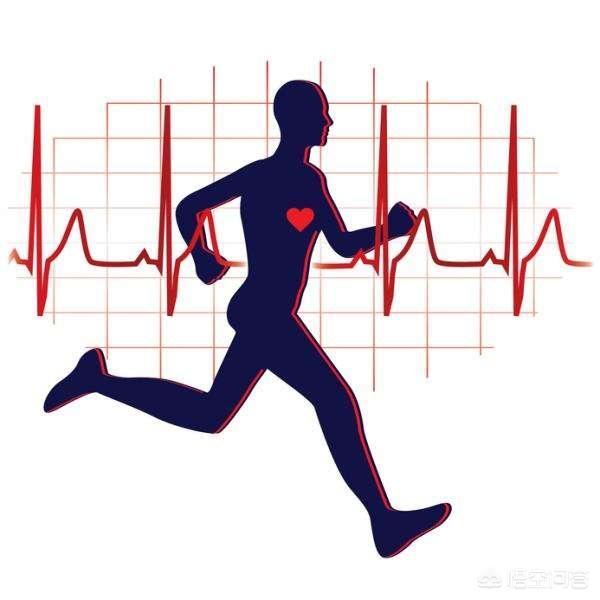
Exercise exercise can not only enhance the cardiopulmonary function, for high blood fat, high blood pressure regulation effect is also very significant. Usually for heart disease combined with high triglyceride, through effective exercise, can strengthen the lipid metabolism, effectively reduce triglyceride, for the regulation of low-density lipoprotein cholesterol, also has a certain positive effect, at the same time exercise and exercise and raise the "good cholesterol", high-density lipoprotein cholesterol; in the regulation of hypertension, research has proved that after a single exercise can make blood pressure drop 7~7mmhg, and the duration of the exercise is also very significant for the regulation of high blood lipids and hypertension. Hypertension regulation, research has proved that a single exercise can make the blood pressure drop 5~7mmhg, and the duration of up to 22 hours, therefore, in the auxiliary lowering of blood pressure, exercise is also very important.
Exercise can help control obesity, weight loss and weight reduction, but also help to improve blood glucose metabolism, reduce insulin resistance, for the improvement of blood glucose, regulation of vascular microcirculation, etc. also has a significant role, so from all aspects, for friends with heart disease problems, if the physical conditions allow, moderate exercise exercise, for the overall reduction of cardiovascular disease risk, slow down the progression of the disease and reduce the mortality rate of major cardiovascular diseases are very important and beneficial. Major cardiovascular disease mortality is very important and beneficial.
Exercise in patients with cardiovascular disease should be evaluated and intensity controlled
For those who clearly have cardiovascular disease, it is best to undergo a rigorous assessment before choosing the intensity of exercise. In hospitals, there are usually measurements related to assessing the intensity of rehabilitation exercise for patients with cardiovascular disease, and you can make an appropriate choice of exercise intensity after the assessment.
Generally for friends with cardiovascular disease, recommended exercise at the beginning of the choice of low-intensity exercise, through a gradual and orderly way to gradually increase the amount of exercise, but the amount of exercise in general should be controlled, usually recommended to carry out moderate-intensity aerobic exercise can be, the so-called moderate intensity, that is, to achieve the level of 40% ~ 60% of the maximum oxygen uptake can be said to be a little abstract, for the elderly cardiovascular disease patients! In the actual exercise, the pulse rate can be assessed by the number of exercise, usually about 70% to 90% of the 220-age, can be used as an appropriate exercise intensity, such as 70-year-old patients with cardiovascular disease, according to the individual's physical condition, the exercise heart rate control at 105 to 135 beats per minute is relatively reasonable.
Many patients with cardiovascular disease do not know what kind of exercise to choose, in fact, the simplest, may wish to start from slow walking, gradually increase the intensity of the exercise, into fast walking, if the body can tolerate, gradually become jogging and so on, are available. There has been a study on the elderly jogging, fitness dance, tai chi and other cardiovascular diseases on the impact of long-term tracking study, the study shows that jogging for cardiovascular disease benefit the most, while fitness dance and tai chi is second.
In addition to exercise intensity, exercise frequency is also a very important aspect, only effective exercise, there is no sustained exercise, is not exercise cardiopulmonary function, reduce the risk of cardiovascular disease role, usually recommended that patients with cardiovascular disease exercise, choose the appropriate intensity of the exercise mode, no less than 5 times a week, each time no less than 30 minutes of exercise exercise, to be able to effectively make the cardiovascular system benefit. The cardiovascular system can be effectively benefited.
Which heart patients should not exercise
This question is actually not difficult to answer, for severe heart failure, unstable heart failure, prone to arrhythmia, cardiac arrest and other high risk of cardiovascular disease patients, are not suitable for exercise-assisted therapy, to share a European Society of Cardiology for heart failure patients relative contraindications and absolute contraindications to the exercise recommendations-
1. Relative taboos:
weight gain of more than 1.8 kg in 1 to 3 days.
in continuous or intermittent dopamine therapy.
Systolic blood pressure falls during exercise;
Cardiac function class 4;
Severe arrhythmia during activity at quiet;
Heart rate of 100 beats or more at quiet in the prone position.
2. Absolute taboos:
Progressive worsening of dyspnea at rest or with activity in the last 3-5 days;
Significant symptoms of myocardial ischemia with low-intensity activity, poorly controlled diabetes;
Active pericarditis, myocarditis;
Have a significant infectious or systemic disease;
Thrombophlebitis;
Recent embolism.
3. Having moderate to severe aortic stenosis, regurgitant valvular disease requiring surgical treatment, having had a heart attack within 3 weeks, and new onset of atrial fibrillation are not suitable for exercise.

This is a very good question! In our daily life, there are many of us who believe that, but anyone with a bad heart, it is better to exercise less and rest more; to avoid exercise to stimulate the heart and aggravate the condition.
However, everything can not be absolutized, we must analyze the specific situation. There are many conditions of bad heart, should exercise exercise, depends on the specific condition, can not be generalized.
I'm going to join the gang and list some of the common7 Heart Diseases, specifically analyze which heart disease can exercise, which heart disease can not exercise? Finally, recommended for everyone to judge the heart disease patients, should not exercise"2 Principles and 5 Points of Attention"For information only.

What diseases can occur with a bad heart?
By bad heart, it mostly means that there is an abnormality in the functioning of the heart, or a disease of the heart.
Heart diseases are categorized into congenital heart disease and acquired rest heart disease according to their origin.
congenital heart disease.It is a disease in which the heart develops abnormally during the fetal period, resulting in heart malformations, such as common congenital heart disease: ventricular septal defect, atrial septal defect, etc.; and also due to congenital abnormalities of the immune system, resulting in damage to the heart muscle, which can also result in congenital heart disease.
acquired heart disease.It refers to heart disease that develops after birth. For example, common acquired heart diseases include coronary atherosclerotic heart disease, rheumatic heart disease, hypertensive heart disease, and pulmonary heart disease.
Different types of heart disease, should not exercise exercise, there are different provisions, below, I come to the common 7 types of heart disease to specify, so that everyone guys, refer to the implementation.
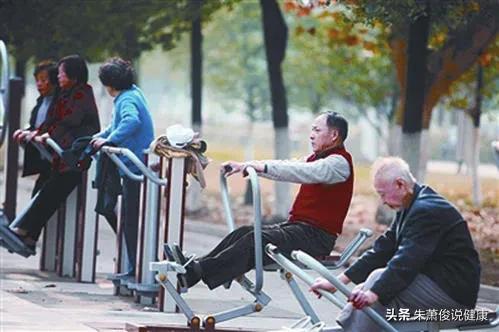
7 common types of heart disease, should you exercise or not, to analyze specifically
1. ventricular septal defect heart disease, should I exercise?
Ventricular septal defect is a common condition of congenital heart malformations, which is usually associated with shortness of breath and dyspnea during strenuous exercise.
Patients suffering from this disease should pay attention to balanced nutrition, adequate sleep, rest and avoid strenuous exercise in their daily life.
After effective treatment, patients with this disease can be under the guidance of a doctor, as prescribed by the doctor to carry out appropriate sports and exercise.
2. Atrial septal defect heart disease, should I exercise?
Atrial septal defect is a residual unclosed defect between the left and right atria due to abnormalities in the development, resorption, and fusion of the atrial septum during embryonic development and is one of the most common congenital heart diseases in adults.
Patients with this disease usually do not need to limit their activities or exercise; however, if there are complications such as arrhythmia, heart failure, or pulmonary hypertension, then the patient should need to limit certain exercises.
3. Coronary heart disease, should I exercise?
Coronary heart disease is known as coronary atherosclerotic heart disease. It is mainly due to the coronary artery atherosclerosis, resulting in the coronary artery lumen narrowing, or occlusion, ultimately resulting in myocardial ischemia, hypoxia or necrosis, patients often show chest pain, chest tightness and other uncomfortable symptoms.
It is clinically recognized that exercise helps is patients with coronary artery disease to achieve and maintain a healthy weight and is beneficial in controlling diabetes, elevated cholesterol and hypertension.
However, it is recommended that patients with coronary artery disease, under the guidance of a doctor, develop a specific exercise and workout program; in general, you can do about 150 minutes of moderate-intensity exercise per week, such as walking for 30 minutes per day.
4. Rheumatic heart disease, should I exercise?
Rheumatic heart disease, also known as rheumatic heart disease, is a narrowing and/or incomplete closure of the heart valves caused by damage to the heart valves after a severe, or repeated, attack of rheumatic fever.
Clinical opinion is that patients with rheumatic heart disease should be encouraged to exercise appropriately, but must avoid strenuous as well as strenuous exercise.
5. Myocarditis, should I exercise?
Myocarditis, a limited or diffuse, acute or chronic inflammatory lesion of the myocardium.
Clinically, myocarditis is categorized into infectious myocarditis and non-infectious myocarditis according to the different causes of the disease; according to the severity of the disease, myocarditis is categorized into ordinary myocarditis and fulminant myocarditis.
For patients with myocarditis in the acute stage, rest should be observed, nutritional support should be strengthened, and exercise should be avoided; while for patients in remission, it is recommended that appropriate sports and exercise should be carried out under the guidance of the doctor in order to enhance immunity and prevent colds.
6. hypertensive heart disease, should I exercise?
Hypertensive heart disease (HHD) is a general term for heart disease caused by high blood pressure, a long-term increase in cardiac load, and other factors related to high blood pressure, characterized by hypertrophy and dilatation of the left ventricle.
For hypertensive heart disease patients, in addition to adhering to strict dietary restrictions, it is recommended to enhance exercise and exercise to control weight and prevent obesity, and the intensity of exercise is generally based on moderate-intensity aerobic exercise.
7. pulmonary heart disease, should I exercise?
Pulmonary heart disease, referred to as cor pulmonale, is caused by bronchial, pulmonary, thoracic, or pulmonary vascular disease, which results in increased pulmonary vascular resistance, leading to pulmonary hypertension and ultimately structural and/or functional changes in the right ventricle.
Cor pulmonale is a group of serious respiratory and circulatory diseases that can present with respiratory failure and heart failure, severely affecting patients' quality of life and longevity.
Clinical opinion for patients with pulmonary heart disease, can be under the guidance of the doctor, moderate exercise exercise; but to avoid travel to the plateau area of oxygen deficiency, avoid access to public places with large flow of people, in order to prevent cross-infection.
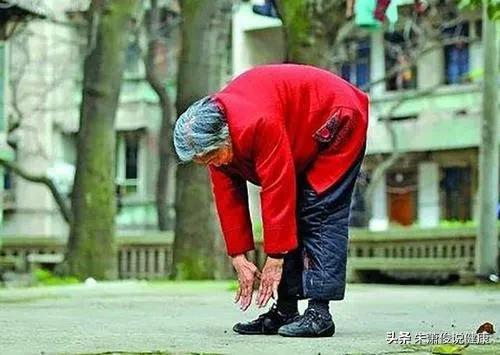
The heart is not good, should exercise, remember 2 principles, 5 points of attention
2 principles:The first principle is not to exercise during an exacerbation, but to consider it only after the condition has stabilized; the second principle is to exercise as prescribed by a doctor or under the supervision of a doctor.
5 points to note:
First point of caution:Suspend exercise after a recent heart attack, such as a myocardial infarction;
Second point of caution:Suspend exercise if a stent has recently been placed in a coronary artery;
Note #3:Suspend exercise if you have recently had coronary artery bypass grafting, or if you have a combination of respiratory or other illnesses;
Fourth point of caution:Suspend exercise if you have unstable angina, or if you have heart failure and various arrhythmias that have not been effectively controlled;
Fifth point of caution:Patients with pacemakers or implantable internal defibrillators are advised to be evaluated by a physician to decide whether they should exercise or not.
In conclusion: people with a bad heart, should exercise, to be analyzed specifically, the details can refer to this article to perform.
Do you agree with me?
Daily update on health hotspots, medical pain points; if what I say, is exactly what you think, then please like, retweet, follow Zhu Xiaojun said health!
Special note: All recommended medications in the comments section should be tried with caution and never purchased with a call!
The heart is one of the most important organs in the human body, and is the motor of life that guarantees the delivery of blood to all tissues of the body. A bad heart is common in patients with coronary heart disease, coronary artery disease, arrhythmia and other heart diseases, which seriously jeopardize the life and health of patients. For this group of people, it is especially important to pay attention to daily habits.
Do people with bad hearts need rest or exercise?
The benefits of exercise are obvious to all, but for some special people, they need to pay extra attention to exercise control. People with a bad heart may suffer a worsening of their condition or even sudden death due to exercise, but moderate exercise is also beneficial to the recovery of heart function, which in turn helps to control the condition.
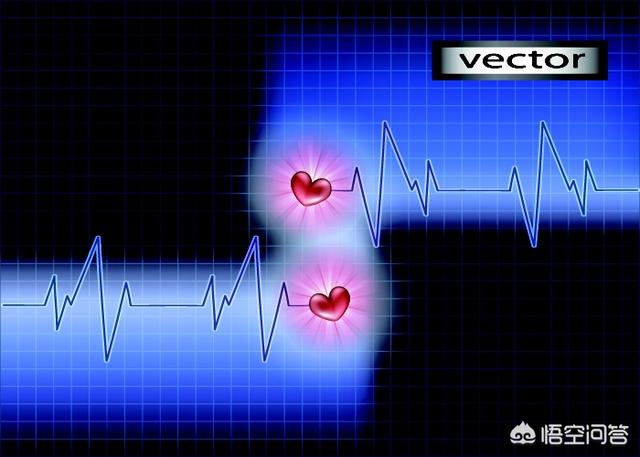
1. The benefits of exercise for heart patients:Exercise enhances the adaptability of heart function, improves the blood supply capacity and elasticity of coronary arteries, reduces the risk factors for heart disease, and improves the regulation of human blood vessels. Therefore, exercise therapy is an important part of cardiac rehabilitation and plays an important role in promoting the recovery of heart disease patients.
Clinically, exercise is prescribed for cardiac patients for the following purposes: to increase myocardial oxygen supply and enhance myocardial efficiency; to lower cholesterol levels; to reduce risk factors for heart disease; to increase vascular elasticity and slow the progression of atherosclerosis; and to improve mood.

2. Exercise prescription for heart patients:Aerobic exercise that improves cardiopulmonary function should be the mainstay, together with some training that moves joints, promotes blood circulation, and strengthens muscle power. Exercise should pay attention to gradual and orderly progress, it is currently believed that in addition to severe coronary artery disease,Unstable angina,Except for cardiac insufficiency, severe arrhythmia with locomotor organ lesions, and acute infections, patients with other cardiac problems should exercise moderately as prescribed by the doctor.
Exercise program should be walking, jogging, cycling or exercise bike, swimming and other low-intensity aerobic exercise, in order to improve the patient's heart and lung function. Of course, the most important thing is to carry out exercise in a gradual manner, such as the ward stage, it should start with slow no, gradually practicing walking and slow stair climbing, supplemented by upper limb and lower limb exercises; after discharge from the hospital, it can gradually speed up the walking speed, increase the time of stair climbing and so on. After that, gradually resume normal activities, adhere to the daily exercise at least 30min, in order to exercise without discomfort as the standard, during the period to pay attention to monitoring the heart rate, blood pressure and other changes, the emergence of anomalies, and timely access to medical treatment.
The heart is one of the most important organs of the human body, a person's heart is strong, the heart muscle contraction ability is good, it can be successfully transported to all parts of the body, to meet the needs of the body tissues of blood, oxygen and nutrients, and the heart is not good people often angina pectoris, heart failure, arrhythmia and other manifestations, it can be seen that the heart's role is how big. Many people think that if you have a bad heart, you can't exercise and you need to rest and recuperate. The benefits of exercise are obvious to all, but for some special people, as long as attention is paid to the control of exercise, you can also enjoy the benefits of exercise.
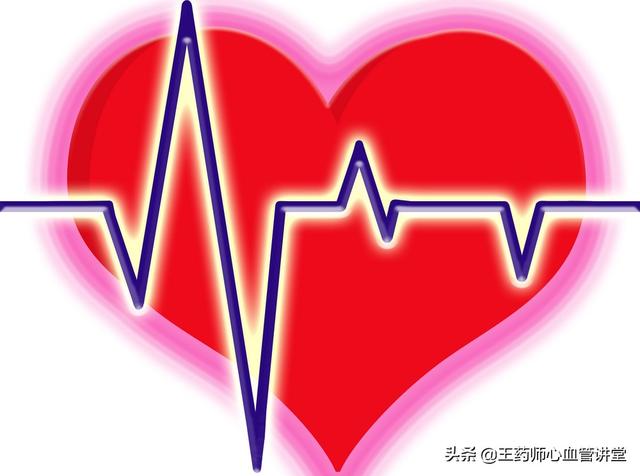
Do people with bad hearts need rest or exercise?
Appropriate exercise for people with a bad heart is beneficial, first of all, exercise can promote the expansion and lengthening of the small blood vessels of the heart, thus improving the oxygen supply of the heart muscle, facilitating the metabolism of fat in the blood, and improving the working capacity of the heart muscle and the metabolic capacity of the heart.
Middle-aged people who walk regularly and regularly or do gardening have a much lower risk of dying than those who sit on the couch and watch TV all day, even if they are at high risk for heart disease or stroke, according to a new U.S. study.
The study also found that the degree of improvement from exercise was more pronounced for smokers or people with cardiovascular disease, such as diabetes or high blood pressure, and that the risk of premature death was reduced by 45 percent for those who exercised regularly.
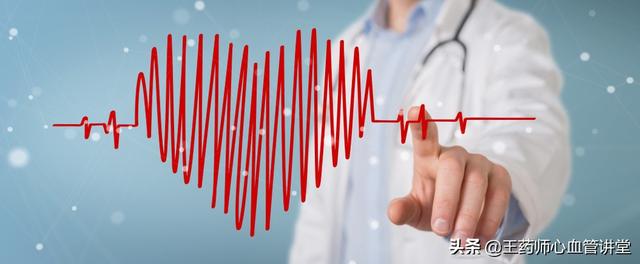
However, chronic heart disease patients due to cardiovascular function is impaired, the load can withstand less, physical exercise will make the heart beat faster, shortness of breath and heart overload, but also cause other serious consequences. But as long as you grasp the degree of exercise can be moderate exercise.
Heart disease is often categorized into congenital heart disease and acquired heart disease. Congenital heart disease is a type of congenital defective heart disease, and patients can usually undergo surgery in infancy and childhood to restore normal function of the heart, so sports are possible for patients after active treatment, but it needs to be evaluated by a clinician;
Acquired heart disease is common in coronary heart disease, rheumatic heart disease, hypertensive heart disease, and pulmonary heart disease. Patients with chronic heart disease need to find a doctor to assess their heart function before exercising, and choose the appropriate type and intensity of exercise for the different functions of the heart.
Chronic cardiac insufficiency can be categorized into four levels, each with a different exercise intensity:
Level 1: Can perform daily activities, but has poor stamina, cannot run, and feels short of breath after going up 4 or 5 room stairs.
Grade 2: Can walk on level ground for half an hour, cannot walk fast, feels breathless when going up a 3 or 4 bedroom building.
Grade 3: Can only walk 100-200 meters slowly, it is difficult to complete general household chores, and the heart beats rapidly when the movement is slightly faster.
Grade 4: Shortness of breath with 100 steps (about 50 meters) and mild heart failure.
Patients with grade 2 are suitable for slow walking, while those with grade 3-4 need bed rest and are not suitable for exercise.
What exercises are suitable for people with a bad heart?
1、proud trot
We all know that the heart can not be too strenuous exercise, so we can choose jogging. Jogging or running in place is conducive to improving cardiopulmonary function and improving the heart's absorption of oxygen. It is recommended to jog at least about 20 minutes a day and exercise no less than five times a week.
2, Rapid run
The amount of exercise of fast walking is between walking and jogging, especially especially suitable for heart disease patients, generally six kilometers per hour when walking fast, walking more than one hundred steps per minute, the heart rate should reach one hundred times a minute. You can also fast walking and slow walking cross, such as fast walking for three minutes, slow walking for one minute, so that you can stimulate the heart to carry out regular increase and slow down, can enhance the contraction force of the myocardium, so that the blood vessels outside the heart dilation, increase the heart's blood supply capacity.
3、Taijiquan
Patients with bad heart can also play tai chi, tai chi is very good for high blood pressure disease, heart disease and so on, it is the most suitable for people with bad heart. Moreover, playing tai chi regularly helps to maintain a person's peace of mind, and the chances of people with a good mindset suffering from heart disease will decrease a lot.
4. Cycling
Cycling is a better aerobic exercise, nowadays the bicycle design is more reasonable, riding is also more comfortable, but also can adjust the speed, is conducive to the aspect of adjusting the amount of load and the amount of exercise, proper cycling is conducive to the heart's oxygen uptake.
How can I improve my heart function?
Want to improve the heart function, first of all in the diet should adhere to the low-fat, low-salt, low-sugar dietary principles, high salt diet will cause higher blood pressure, increase the heart load. In addition, we should pay attention to regular exercise, active aerobic exercise, which can make the heart function to improve and exercise, increase lung capacity, but also to avoid overwork, maintain a happy mood, regular work and rest, to improve the quality of sleep.
And the most important point is to treat the primary heart disease, if the primary disease is not controlled, no matter how much exercise or medication is ineffective, most of the heart disease is chronic and need to take medication for years.
I am Pharmacist Wang, dedicated to helping you manage your body by explaining complex and difficult disease knowledge in plain words. Your praise is my greatest motivation! Also, if you have family members who are suffering from bad heart related problems, please pass this article on to them!
The subject of this question is also a lot of people are concerned about the problem, because now suffering from cardiovascular and cerebrovascular disease is a large group of people, in order to the health of the body, when you have to pay careful attention to the old people, there is no professional knowledge in this area, so there are times at a loss, for their own is the workout or the need to rest, if the exercise that exercise, how to exercise, to do those exercises are more appropriate, the intensity of how much is the best time for each exercise? How long is the best time for each exercise? Really do not know what to do.

Below we will talk with you about whether people with a bad heart need to exercise, or is it better to rest? The first thing to say is that "life is movement", this saying is true, but for people with a bad heart need to pay attention to, because exercise exercise, the body's limbs and the muscles of the whole body need to be calmer than the (rest) blood supply to be more, then this will inevitably increase the heart's burden of the blood ejection, just as we carry a thing, the heart's muscles have to make more effort to meet this demand. As when we carry something, the muscles of the heart have to work harder to meet this demand.

It is based on the above common sense, so that for the heart itself is not good people should pay attention to, pay attention to what? Is to exercise the body's sports program, the way can not be too intense, too intense exercise to make the heart in a short period of time overloaded work, will inevitably lead to the heart of the "overworked", maybe a heart attack, and even rescue time are not, so the heart is not good people to avoid intense exercise.

For people with serious heart disease, such as heart attack heart failure acute attack patients, urination and defecation during hospitalization also need to be in the bed, some patients a little bit of recovery, urination and defecation shyness, while no one in the time to go down to the bathroom to go to the toilet, there are collapsed in the bathroom could not get up to die, so that the acute stage of heart attacks heart failure patients, even to go to the bathroom, get out of bed, walking, squatting, need to be all kinds of body muscles to cooperate, especially the need to defecate holding the breath to make the abdominal pressure increases at that moment is most likely to have problems. The need to defecate and hold your breath to increase abdominal pressure at that moment is most likely to have problems.

For the chronic phase of the patient, according to their own body feeling to carry out some soothing exercise, such as walking, walking, deep breathing, or eight brocade and other traditional sports, do these exercises, always pay attention to their own body feeling, if you feel tightness in the chest, panic, hurry to stop, take a break to slow down, so that according to the feeling of judgment, which is called cut a knife, because it is heart Bad people, everyone's tolerance is different, we can not do a sweeping, rigid dogmatic provisions is how many steps, or how long, everything to their own feelings for the better.

In the process of physical exercise, do not compete with other teammates, have to keep up, or have to run in front of him, or have to complete their own set of sports goals, because you have a bad heart, I used to have a forgettable retired workers, because of the serious lack of myocardial blood supply at that time, did a cardiac stenting surgery, the recovery is quite good, but his heart is particularly strong, and a group of cycling buddies riding a race car! When going out, fellow riders also asked him, "Can you do it, or not, you come down to take a break and push to go?" "It's okay, you guys go first, I can do it, keep up", but after less than a minute, some of the riders found that did not keep up, turn around and look, has fallen to the ground, and never rescued. Very painful lesson, so that people with a bad heart exercise exercise must be their own grasp, not to be brave. Intensity to the chest area is not uncomfortable, not panic for good, must be within the tolerance of their own body.

For complete rest, but also not good, in a state of rest, the blood flow is slow, easy to form blood clots, clogging blood vessels, so you still need a moderate amount of exercise, such as we lie in bed can also do some upper and lower limb exercise, empty pedal bicycle, hands grasp objects can be, of course, also to the self feeling for good.

Therefore, the problem described by the subject should be a combination of rest and exercise, the balance of movement is good, and self-perception is the standard.
The heart is most afraid of winter, the temperature drops, the blood vessels contract, the blood supply and oxygenation of the organs will certainly be affected, coupled with the blood pressure will also rise, cardiovascular accidents are so happen.
Do people with bad hearts need rest or exercise?
Many people with a bad heart are afraid to exercise, although moderate exercise can enhance cardiac function, good for the heart, but improper exercise, but also will increase the heart load. Because of this, the bad heart should not exercise, has become a problem for many patients.
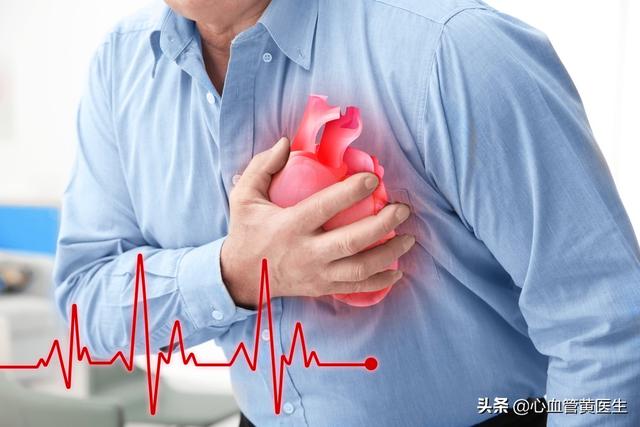
First, people with bad hearts can exercise.
Whether or not someone with a bad heart can exercise also depends on the severity of the patient's own heart condition. Even people with good hearts can be fatal if they don't exercise properly. For example, we have often seen the news of running a marathon sudden death, athletes should be very strong heart, but there will be sudden death such things happen. This tells us that people with bad hearts can exercise, but it must be done properly.
Why is it that you can exercise even if you have a bad heart? Long before that, studies have shown that the human heart has also evolved step by step to its current state. Because early farmers were engaged in farming activities for a long time, the heart began to slowly become thinner, softer and more elastic, and the heart chambers became larger and longer, which also possessed a stronger ability to pump blood. And some studies have shown that long-term exercisers have more powerful heart function, which is because exercise enhances the contraction and diastolic function of the heart, increases cardiovascular density, length, and improves blood and oxygen supply to the heart muscle. And if you don't exercise, your heart and blood vessels slowly harden, greatly increasing the risk of cardiovascular disease. This applies to anyone, including those with a bad heart itself.

Secondly, this is how people with bad hearts should exercise.
People with bad hearts can exercise, but it is important to find out the severity of the individual's condition and make sure to exercise properly.
1. Contraindications to exercise:Those with severe cardiac insufficiency, mainly patients with heart failure grade 3/4; patients with unstable angina; patients within one month after a heart attack; and patients with unstable cardiac conditions, these patients should exercise easily.
2. Exercise varies from person to person:Exercise must be within the limits of strength, this is the most important point, the heart itself is not good, if the heart load beyond the exercise, will certainly have problems. The intensity of exercise tolerated by different patients also depends on the type of disease and the severity of the condition. For example, if only minor arrhythmia, the problem is not big, and healthy people can be the same as normal exercise; if the coronary heart disease patients, in stable condition, you can participate in some low-intensity exercise; if it is a heart attack recovery patients, you should reduce the exercise, starting from simple chores and so on.
3. The exercise program should be reasonable:Since exercise varies from person to person, each person is required to develop his or her own exercise program, and it is best to follow the doctor's advice to set, especially those who are at high risk of cardiovascular disease, do not exercise at will. Currently, China's cardiovascular disease prevention guidelines recommend 4-5 times a week of low-intensity exercise, each 20-30min, or more than 3 times a week of moderate intensity exercise, each lasting 40-60min.
As for the measure of exercise intensity, the exercise heart rate is generally taken as the standard. According to clinical practice, experts suggest that for patients with heart disease over 40 years old, the exercise heart rate should be kept below 120 beats / min, patients with a history of angina should be kept below 110 beats / min, exercise with slight sweating, slight shortness of breath is appropriate, there is no excessive fatigue after exercise, and soon return to normal heart rate. Pay particular attention to the exercise to observe the abnormal performance, if there is angina, chest tightness, dizziness, dyspnea, etc., must immediately stop exercise.
4. Selection of sports programs:People with bad heart, the intensity of exercise generally can not be too high, so it is recommended to choose some simple and easy low-intensity aerobic exercise, such as walking, jogging, tai chi, dancing, cycling and so on. There have been studies showing that dancing is a more suitable form of exercise for people with heart disease, you can go to square dancing.
I am Dr. Huang, a cardiovascular physician dedicated to helping you manage your body by explaining complex and difficult disease knowledge in plain words. Your praise is my greatest motivation! Also, if you have family members with exercise-related concerns, please pass this article on to them!
I remember when Dr. Zhang was a child, I often heard that people around me had bad hearts, so these people needed to rest all day long, fearing that the slightest activity would aggravate their heart disease. However, when Dr. Zhang gradually in the field of heart disease after continuous learning, I gradually realized that the original heart is divided into many kinds of bad, some of which need to reduce the activities, while more still need to maintain a certain amount of physical activity. When it comes to this topic, it involves the relationship between exercise and heart disease, and modern medical knowledge in this area has been very deep compared to 30 years ago. Today, Dr. Zhang will briefly explain this to you.

In fact, for the name of heart disease, too big, which contains many diseases, not all diseases need to exercise to improve the state of the disease, and even some diseases do not recommend exercise, such as hypertension acute, hypertension sub-acute, acute myocardial infarction acute stage, acute left heart failure, chronic heart failure decompensation stage, etc., these diseases in the acute attack period are not recommended to do physical activity, to rest, mainly. Because physical activity may aggravate the condition.
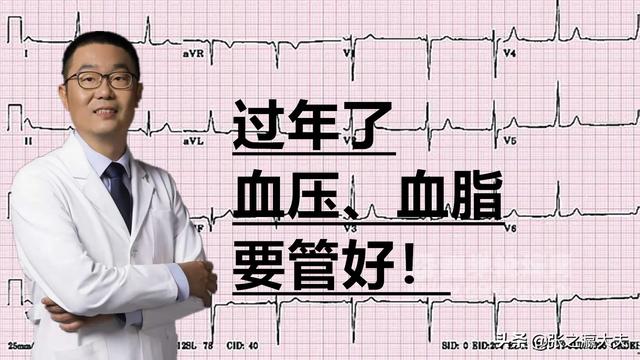
And almost all heart disease if after effective treatment into the recovery period, this time is no longer prohibited physical activity, in many cases also need to scientific moderate exercise. To cite a few examples, take we see the most high blood pressure, blood pressure rise in the acute phase, blood pressure rises significantly, this time is generally not recommended to exercise. However, once the hypertension patient's blood pressure is under control, it is still recommended to increase the amount of exercise, scientific exercise, in order to improve the condition of hypertension. In addition, in this regard, the most typical disease state than acute myocardial infarction this malignant disease, acute myocardial infarction is strictly prohibited during the acute attack of physical activity, it can be said that the less physical activity, the better, which can prevent myocardial oxygen consumption increase brought about by cardiac rupture. However, when the acute myocardial infarction stabilized, this time can not just limit the patient's activities, this time the need for moderate exercise, if necessary, need to check the cardiopulmonary exercise test, so as to make clear how much exercise is more suitable for the patient, with the most scientific exercise to improve the patient's condition.

Objectively speaking, for most cardiovascular diseases, as long as the condition is stable, generally moderate exercise can improve the condition, especially to improve myocardial remodeling, reduce the chances of disease recurrence. However, exercise should also be moderate, people don't overdo it, sometimes exercise too much, this will lead to recurrence of the disease, or even aggravation. In this regard, if you want to achieve professional treatment results, if the hospital near you has a cardiac rehabilitation department, then you can consider going to the clinic for further treatment. We hope that you can get a more professional treatment plan under the guidance of professional doctors.
This article is written in the last day of the Year of the Rat at 6:30 in the morning, once again Zhang Dafa to the majority of new and old fans and friends to pay tribute to the New Year, I wish you all the Year of the Ox, good health, family happiness!


I'm Dr. Little Shadow. Do people with bad hearts need to rest or exercise? Many people think they have heart problems and need to rest. Others think that their heart is already bad and they need to exercise. I don't know what kind of disease I am referring to, but heart disease includes a lot of diseases, such as congenital heart disease (atrial, ventricular, and fasal), rheumatic heart disease, coronary heart disease, myocarditis, endocarditis, etc. Mild disease can be asymptomatic, while severe disease can be asymptomatic. A mild one can be asymptomatic, while a severe one can present with severe shortness of breath, dyspnea, heart failure, and so on.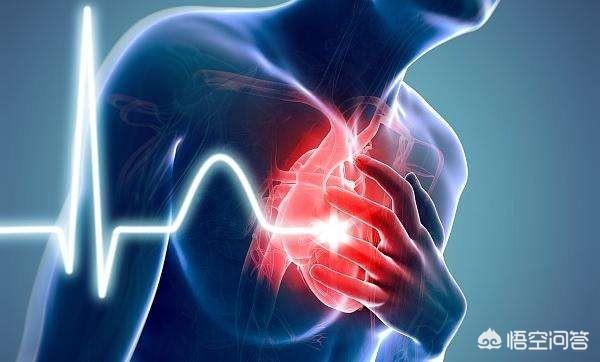
Can I exercise if I have a bad heart?
There has been a previous heart disease, which is now in a stabilized state, such as after coronary stent implantation; then you can exercise appropriately. Moderate exercise can enhance the cardiopulmonary function and benefit the heart. But the amount of exercise to comfortable for appropriate, not too much, can not try to be strong. For example, you can take a walk after meals, slow walking, playing Tai Chi, etc. In terms of time, you can gradually increase the time, from 5 minutes to 10 minutes, in order not to be tired. If the exercise process, there is discomfort in the precordial area, dyspnea, etc., should promptly stop the exercise, if necessary, 120 call for help.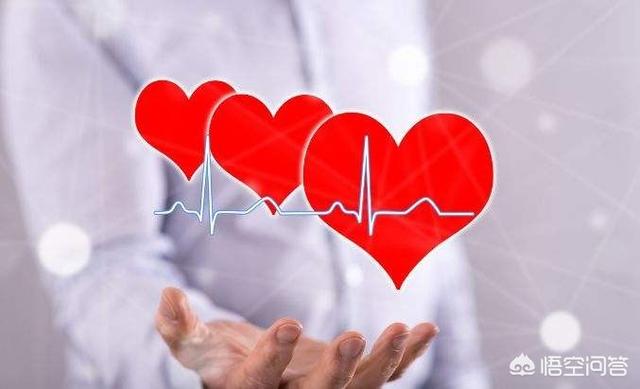
Another is now in the period of cardiac morbidity, angina attack, dyspnea and other symptoms, then it should be appropriate to rest, not to exercise, the body does not allow exercise. For example, after acute myocardial infarction stent implantation, should be absolutely bedridden, reduce cardiac oxygen consumption, conducive to the recovery of heart function.
If you have a bad heart, but no symptoms at the moment, you can still do some proper exercise, and you have to analyze each case on a case-by-case basis.
I am.Dr. ShadowPlease follow me if you want to learn more about medicine.
This question and answer are from the site users, does not represent the position of the site, such as infringement, please contact the administrator to delete.